Discover the Best Bluebell Woods Near You

As winter draws to an end and spring follows, bluebells are cropping up around the UK. What better way to welcome the season than to walk through your nearest bluebell woodlands and see sheets of vibrant bluebells glistering under the sunlight?
We’ve created a list of where to find the best bluebell woods in the UK, as well as useful information about the delicate wildflowers and how to ensure you keep our precious woodlands safe so bluebells can continue to bloom.
Please Note: Bluebell sap contains toxic ingredients and should not be consumed by humans or animals under any circumstances.
Skip to: Bluebell Woods in the West Midlands | Bluebell Woods in the East Midlands | Bluebell Woods in the South East | Bluebell Woods in the North West | Bluebell Woods in the East of England | Bluebell Woods in the South West | Bluebell Woods in Yorkshire and the Humber | Bluebell Woods in the North East | Bluebell Woods in Scotland | Bluebell Woods in Wales
What are bluebells?
Each Spring, woods all over the UK fill with bluebells, a perennial purple/blue bell-shaped wildflower in the lily family. It’s no surprise that this beautiful flower is widely associated with fairies and witches; the enchanting appearance of the bluebell is enough to make anyone believe in magic. The presence of bluebells is commonly used to identify ancient woodlands, which the UK has plenty of!
When do bluebells flower?
Bluebells tend to flower from late March to early May, reaching full bloom in late April or early May, however, it can vary each year. The initial bluebell bloom often marks the beginning of spring.
How to protect bluebell woods?

Bluebells are incredibly delicate wildflowers. They can take between five to seven years to go from seed to bloom, however, it can only take mere seconds to harm them and their habitats forever.
Almost half the world's bluebells are found in the UK, so before exploring any bluebell woods near you, take a moment to read this section for guidance on safeguarding the plant and its habitat.
- Do not pluck bluebells:
- Look where you step:
- Think twice before capturing your picture:
- Follow the path:
- Keep animals close:
- Take dog waste home:
- Do not camp in Bluebell Woods:
- Take litter home:
Bluebells are protected species in the UK, so it is illegal to intentionally pick or destroy the wildflower.
Bluebells are very delicate flowers. Once stepped on, not only is the bluebell damaged, but damage to the leaves means they cannot absorb the sun and photosynthesise. This causes further damage to the land as the bluebell won't be able to produce new seeds and flowers again.
A picture in the middle of all the bluebells would look great online, but at what cost? By trodding on bluebells to create a path and get into the middle, you damage the bluebell and its ability to bloom again in the spring.
On a bluebell wood walk, follow the path market to avoid trodding on any bluebells.
Dogs are welcome on a bluebell walk, but be mindful that bluebell sap contains toxic ingredients that animals or people should not consume.
Dog waste can damage the soil and ruin other people's experience of bluebell woods if they step into it.
Leave the napping for the wildlife and avoid destroying bluebells by setting up a sleeping bag or tent. Instead, check out our nearest campsites to bluebell woods so you can enjoy the flowers and protect its habitat. The same applies to picnics. Avoid laying picnic blankets down on top of bluebells.
Whether you’re enjoying a refreshing drink or a tasty snack on your walk, make sure you keep the bluebell woods clean and take your rubbish home.
Best bluebell woods in the West Midlands

Crackley Wood, Warwickshire
Crackley Wood is an ancient woodland just north of Kenilworth on Crackley Lane. Enjoy a walk through this stunning wood, which is home to silver birch trees, oak trees, a pond with graceful swans and most importantly – bluebells.
Nearest campsite: Kingsbury Water Park Club Site
Jackson’s Bank, Staffordshire
Take a walk-through Jackson's Bank, made up of long winding paths and tall trees. During bluebell season, bursts of vibrant purple bluebells blanket both sides of the path. Keep an eye out for the early purple orchid, which often synchronises its arrival with the bluebell.
Nearest campsite: Cannock Chase Club Site
Mortimer Forest, Shropshire
Dedicate your day to the Climbing Jack circular trail at Mortimer Forest. Start the walk at Vinnall’s Car Park and follow the route, which takes you through most of Mortimer Forest and exposes breathtaking views over the woodland and countryside. During this trail, you will encounter fields of vibrant cobalt bluebells — bloomin’ lovely!
Nearest campsite: Hereford Club Site
Hay Wood, Warwickshire
Hay Wood is a pleasant ancient woodland area home to a colourful array of wildlife, including roe deer, muntjac deer, owls and plenty more. In the spring, there is a spirited display of bluebells that you can’t miss.
Nearest campsite: Kingsbury Water Park Club Site and Clent Hills Club Site
Shrawley Wood, Worcestershire
Famed for its vast abundance of bluebells every spring, Shrawley Wood is a delightful destination for bluebell lovers. Another pleasant treasure at Shrawley Wood is a babbling brook towards the end of the walk, which peacefully flows through a glorious valley.
Nearest campsite: Wolverley Club Site
Best bluebell woods in the East Midlands
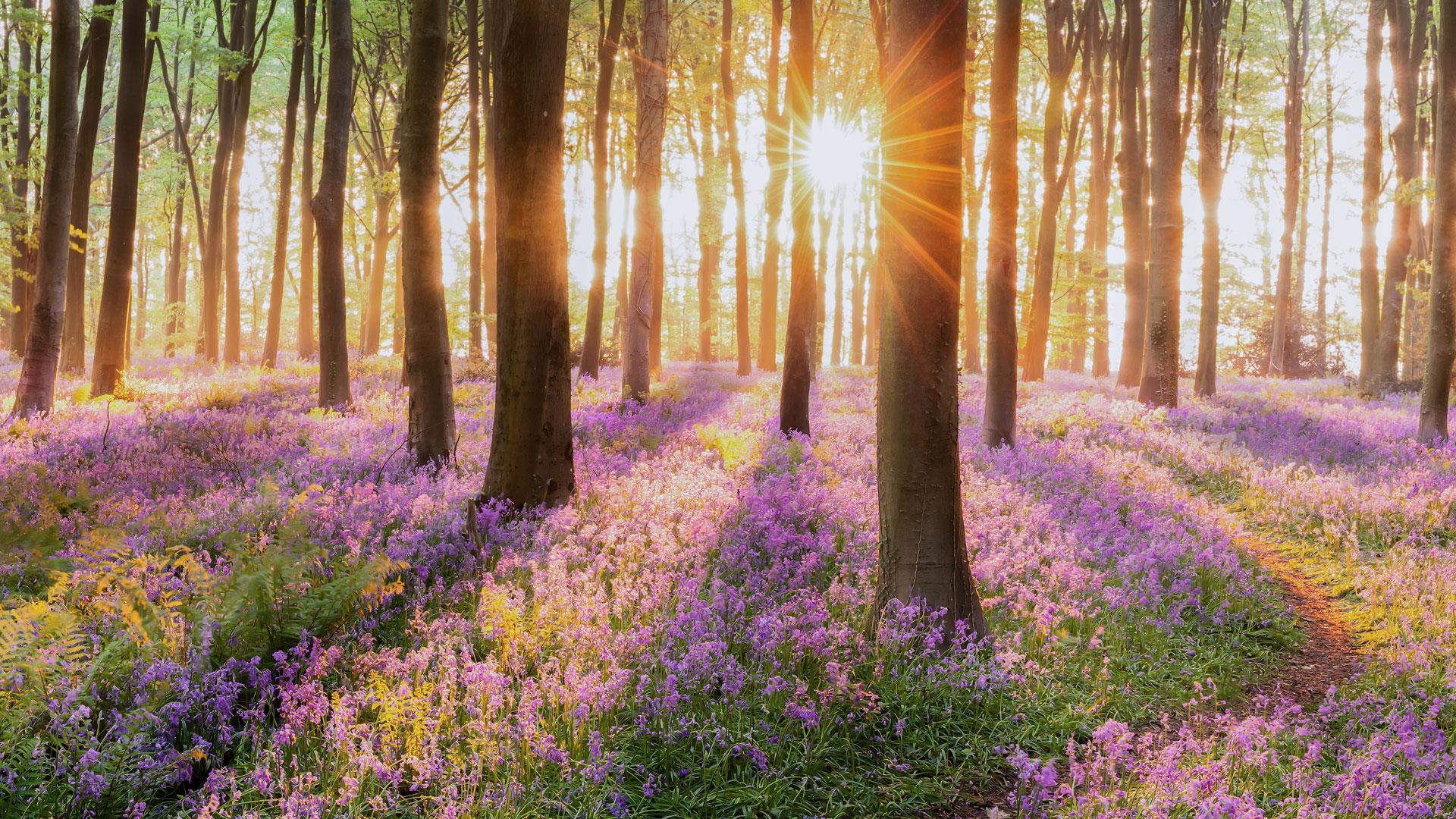
Bluebell Wood, Derbyshire
Easily accessed via the Sett Valley Trail, Bluebell Wood is home to a range of charming wildlife commonly associated with ancient woodland. It’s not hard to spot the sprightly bluebell plant amongst the gorgeous wildflowers that reside in these woods, including marsh marigold and wood anemones.
Nearest campsite: Hayfield Club Site
Launde Big Wood, Leicestershire
Launde Big Wood is part of the Launde Woods nature reserve. During the springtime, the wood is typically a sea of a magical dark purple, flooded with hundreds of bluebells. The wood is inhabited by other pretty flora, including forget-me-not and giant bellflowers.
Nearest campsite: Conkers Club Site
Rigsby Wood, Lincolnshire
Rigsby Wood is an ancient woodland situated at the end of the Lincolnshire Wolds. During the springtime, there is an impressive influx of bluebells which flower.
Nearest campsite: Mablethorpe Club Site
Everdon Stubbs, Northamptonshire
Everdon Stubbs is an ancient hilltop woodland near Daventry Country Park. In springtime, the arrival of bluebells and rare daffodils splashes these enchanting woods with colour.
Nearest campsite: St Neots Club Site
Clumber Park, Nottinghamshire
Spend a day at Clumber Park, a popular country park located near Worksop. The park is well known for its gorgeous bluebell display in spring. There are plenty of places to eat at this park, including a dog-friendly café!
Nearest campsite: Bakewell Club Site
Best bluebell woods in the South East
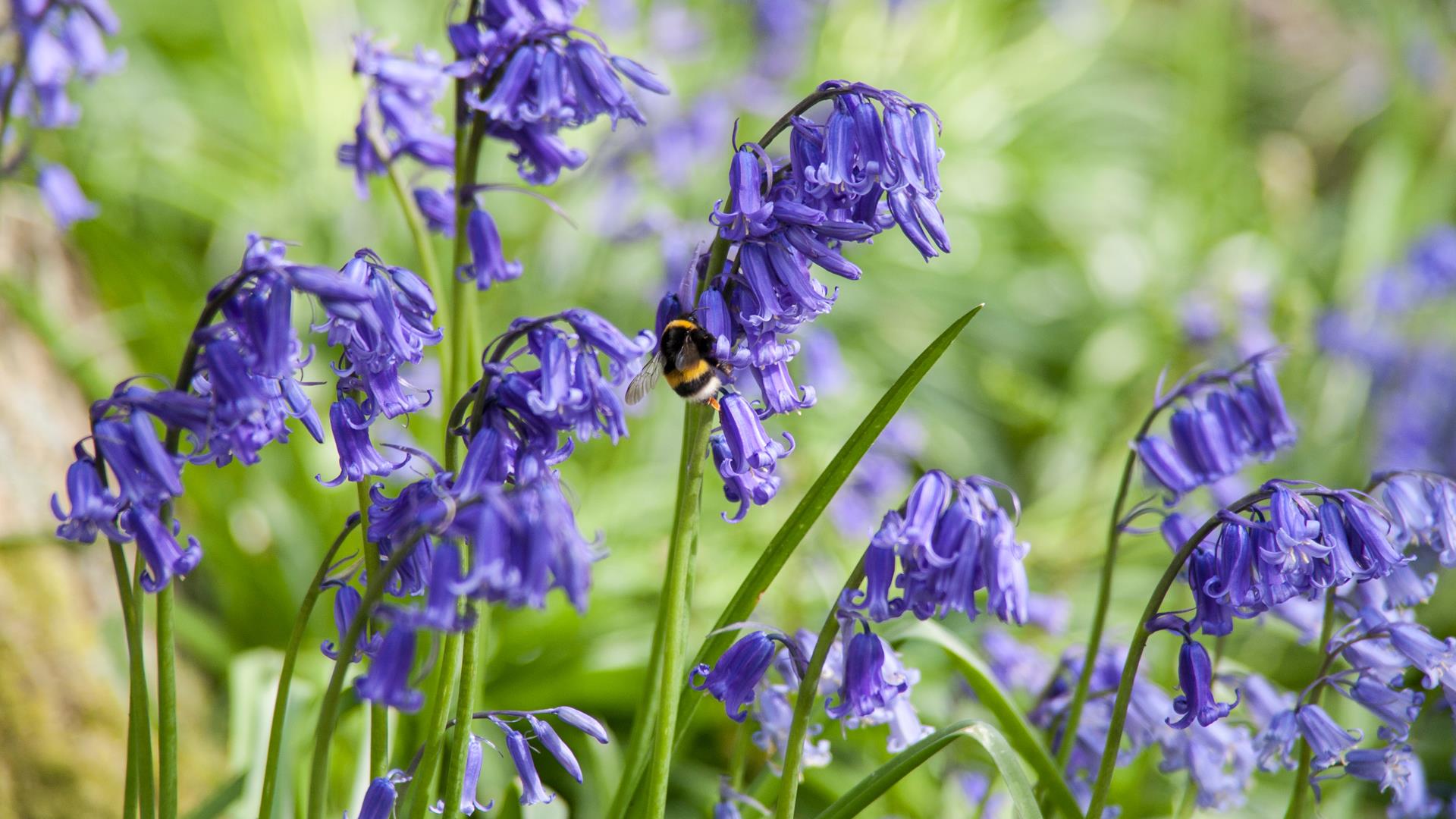
Dockey Wood, Buckinghamshire
Ashridge Estate is made up of lush meadows and chalk downs. Sat on the edge of the Ashridge Estate in Chiltern is Dockey Wood, which is flooded with shimmering bluebells in the spring months.
Nearest campsite: Hereford Club Site
Micheldever Woods, Hampshire
Micheldever Woods is the perfect destination for a peaceful walk. Bursting with wildlife and the elusive muntjanc deer, these woods could be fresh out of a fairytale book. In springtime, the woods exhibit a magnificent display of bluebells to marvel at.
Nearest campsite: Chichester Club Site
Emmett’s Garden, Kent
Emmett’s Garden is a quirky hillside garden with plenty to explore. During the spring season, there is a flourishing display of bluebells covering an acre of woodland floor.
Nearest campsite: Crowborough Club Site
Bowdon Woods, Berkshire
Bowdon Woods near Newbury town is a beautiful woodland area that is a carpet of violet during the springtime.
Nearest campsite: Chertsey Club Site
Staffhurst Wood, Surrey
Staffhurst Wood is a 51-hectare nature preserve south of Oxted, Surrey. It is a beautiful ancient woodland that is bursting with bluebells in late April/early May.
Nearest campsite: Crowborough Club Site
Arlington Bluebell Walk and Farm Trail, East Sussex
Every spring, Arlington Bluebell Walk and Farm Trail open up to visitors and has a dazzling display of bluebells.
Nearest campsite: Normans Bay Club Site
Best bluebell woods in the North West
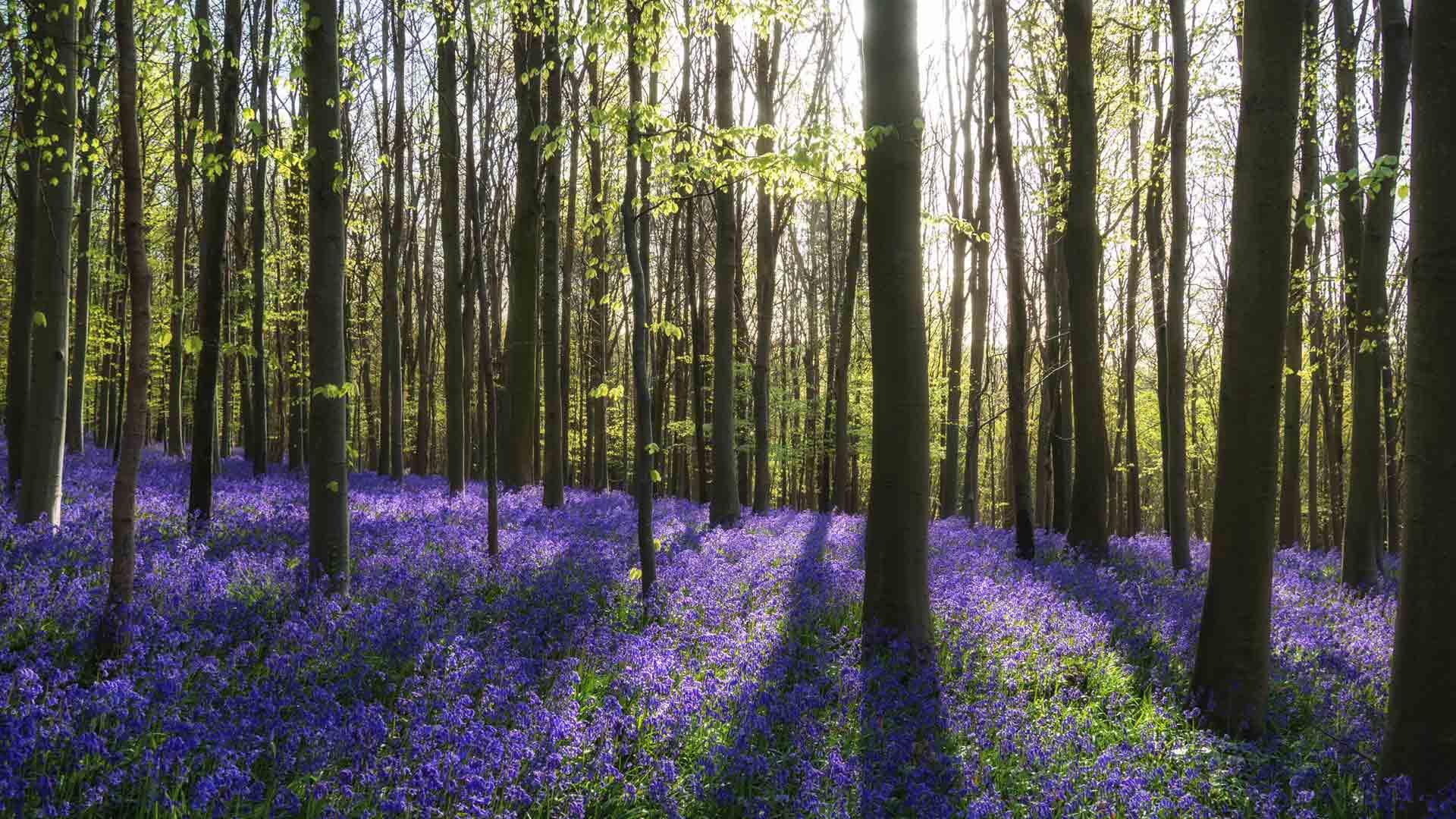
Bodnook Wood, Chester
Experience the beautiful bloom of Chester bluebells at Bodnook Wood on the Sandstone Trail, voted “one of Britain’s favourite walks” by ITV viewers.
Nearest campsite: Delamere Forest Club Site
Skelghyll Woods, Cumbria
Spend the day at Skelghyll Woods, just a short walk from the picturesque village of Ambleside in Cumbria. These woods are captivating in springtime when gorgeous bluebells flower.
Nearest campsite: Bowness-on-Windermere Club Site
Styal Woods, Greater Manchester
Enjoy a relaxing walk through Styal County Park, which has lots of fields and fascinating flowers to look out for, including bluebells in spring of course!
Nearest campsite: Hayfield Club Site
Aughton Woods, Lancashire
Aughton Woods is an ancient semi-natural woodland with plenty of history behind it. In the springtime, enjoy a stroll down the blue carpet laid out made up of bustling bluebells.
Nearest campsite: Kendal Club Site
Best bluebell woods in the East of England
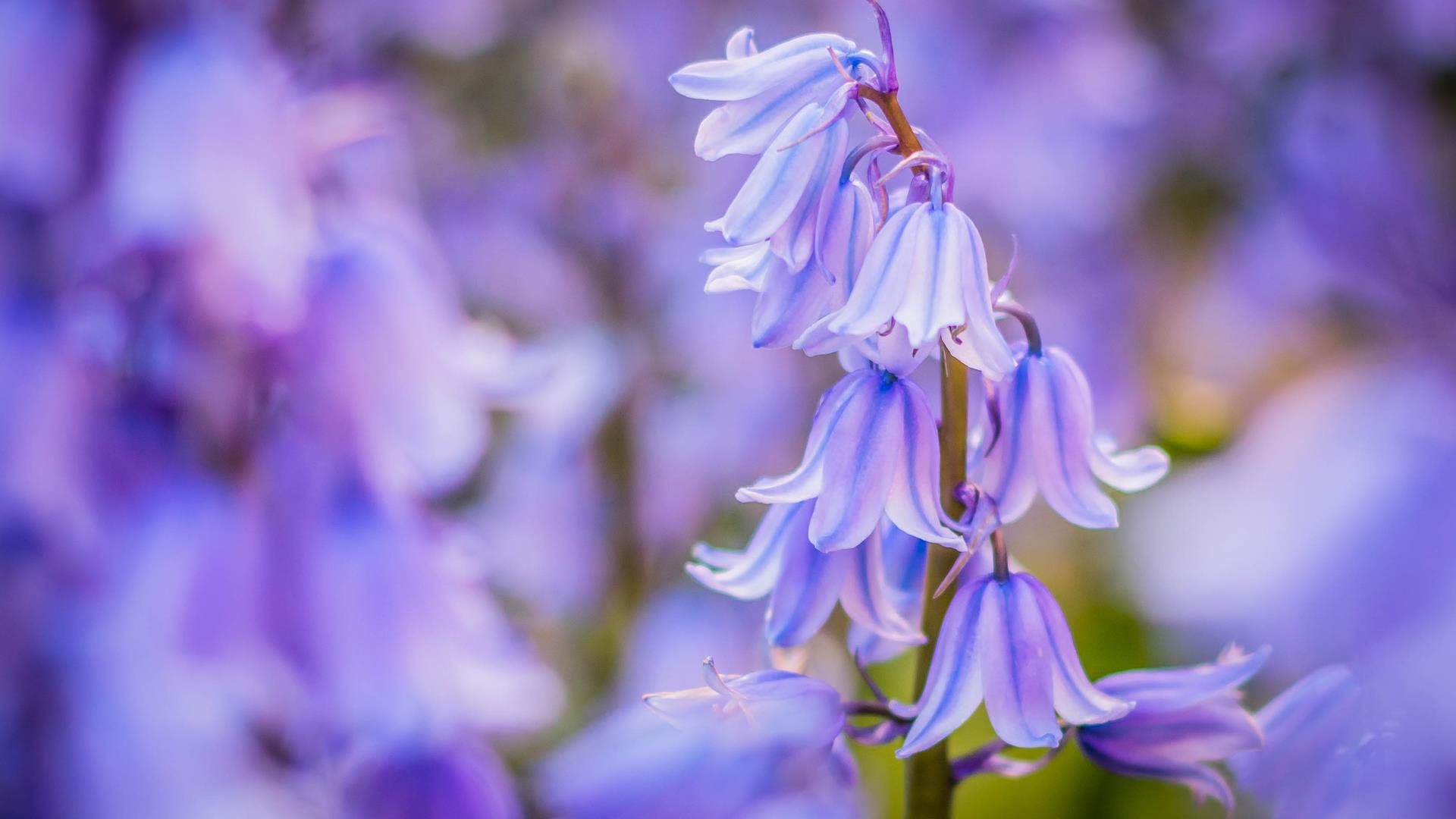
Chicksands Wood, Bedfordshire
Chicksands Wood is a wood situated in Bedfordshire, with plenty of walking trails to explore. With so much flora growing, you’ll be sure to spot bursts of cobalt blue and deep violet in the springtime.
Nearest campsite: St Neot’s Club Site
Hillhouse Wood, Essex
Enjoy the breathtaking site of hundreds of bluebells proudly standing throughout the 33 acres of ancient woodland. The wood is also home to other stunning woodland flowers and is one of the best places to hear the song of the elusive nightingale.
View our campsites in Essex
Foxley Wood, Norfolk
The largest ancient woodland in Norfolk, Foxley Wood is truly magical. A hotspot for fascinating butterflies and vibrant bluebells, this wood looks like it could be straight out of a fairy tale book.
Nearest campsite: West Runton Club Site
Best bluebell woods in the South West
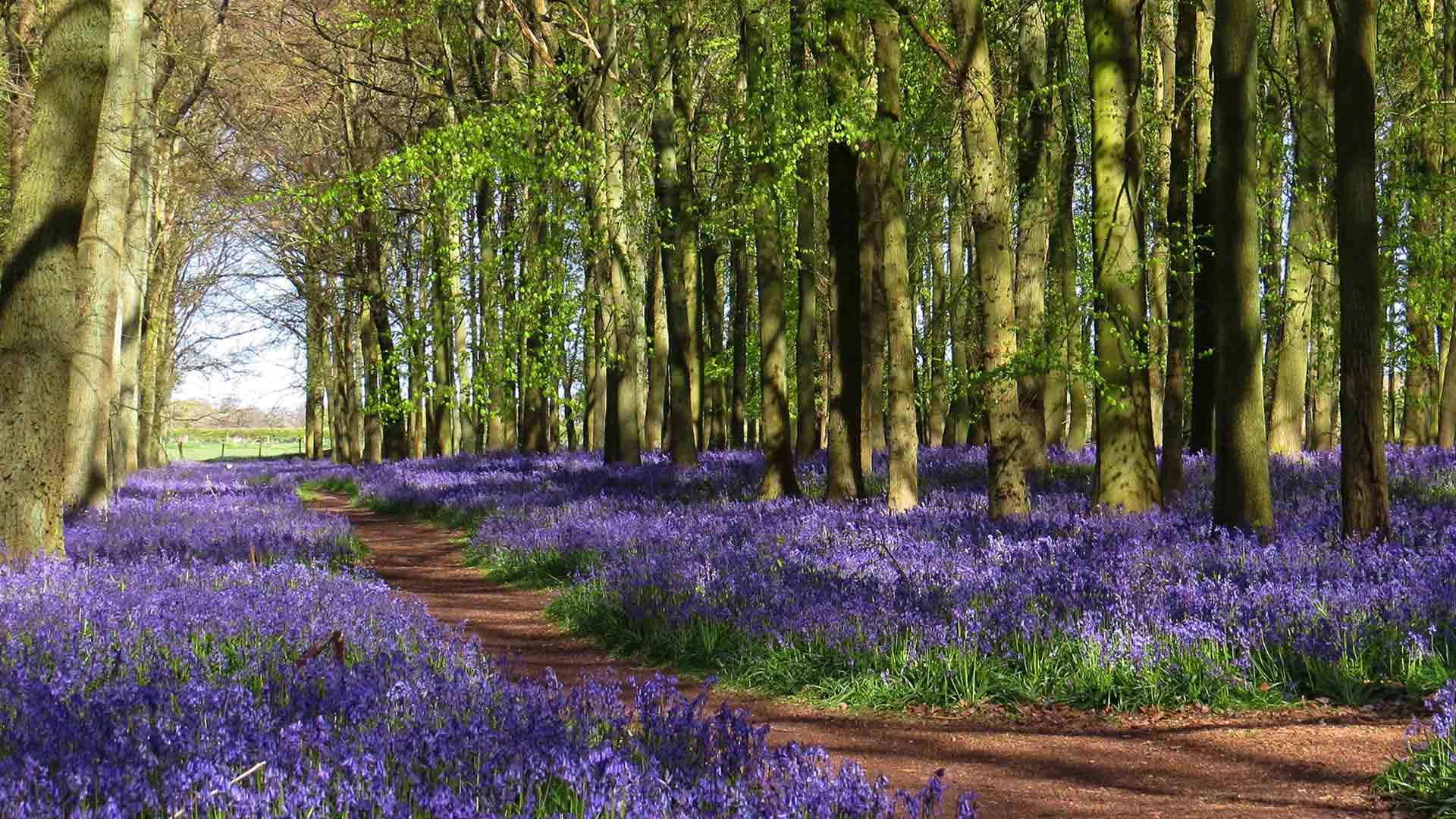
Prior’s Wood, Bristol
Prior’s Wood is a stunning ancient woodland that's as pretty as a picture. You'll find an array of bluebells to admire.
Nearest campsite: Cheddar Mendip Heights Club Site
Cardinham Woods, Cornwall
Owned by Forestry England, Cardinham Woods is nestled in a lush valley with a jewel-blue stream peacefully flowing through the woods. Cardinham Woods is greeted in spring by impressive bursts of deep violet and cobalt blue.
Nearest campsite: Tregurrian Club Site
Lady’s Wood, Devon
Head to this ancient woodland nature reserve in spring to enjoy the bloom of beautiful bluebells. The woods can be found just south of Dartmoor.
Nearest campsite: California Cross Club Site
Greyfield Wood, Somerset
Explore Greyfield Wood, a magical woodland area rich with many gorgeous flowers, including primrose, violets, anemones and, most importantly, bluebells in spring! There is also a babbling stream runningthrough the woods.
Nearest campsite: Cheddar Mendip Heights Club Site
Fifehead Wood, Dorset
Fifehead Wood is a leafy area owned by the Woodland Trust and has a carpet of magical bluebells in the springtime.
Nearest campsite: Verwood Club Site
Best bluebell woods in Yorkshire and the Humber
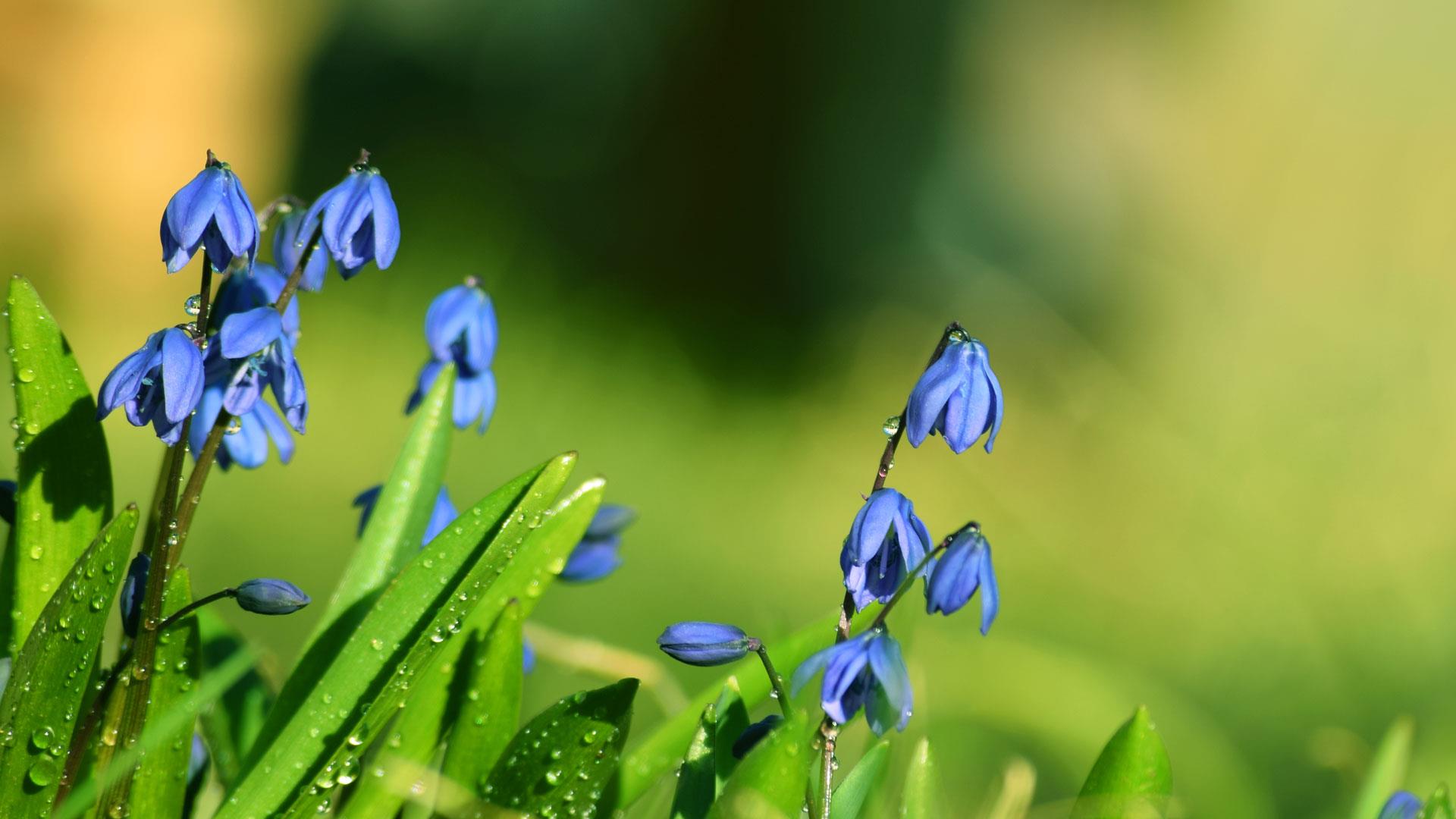
Middleton Woods, West Yorkshire
Middleton Woods is a public nature reserve and the largest remaining woodland in West Yorkshire. In the spring, there is a sea of cobalt blue bluebells blooming.
Nearest campsite: Crowden Club Site
North Cliffe Wood, North Yorkshire
A peaceful nature reserve in Yorkshire, North Cliffe Wood showcases a delightful display of deep violet bluebells.
Nearest campsite: Sherriff Hutton Club Site
Best bluebell woods in the North East
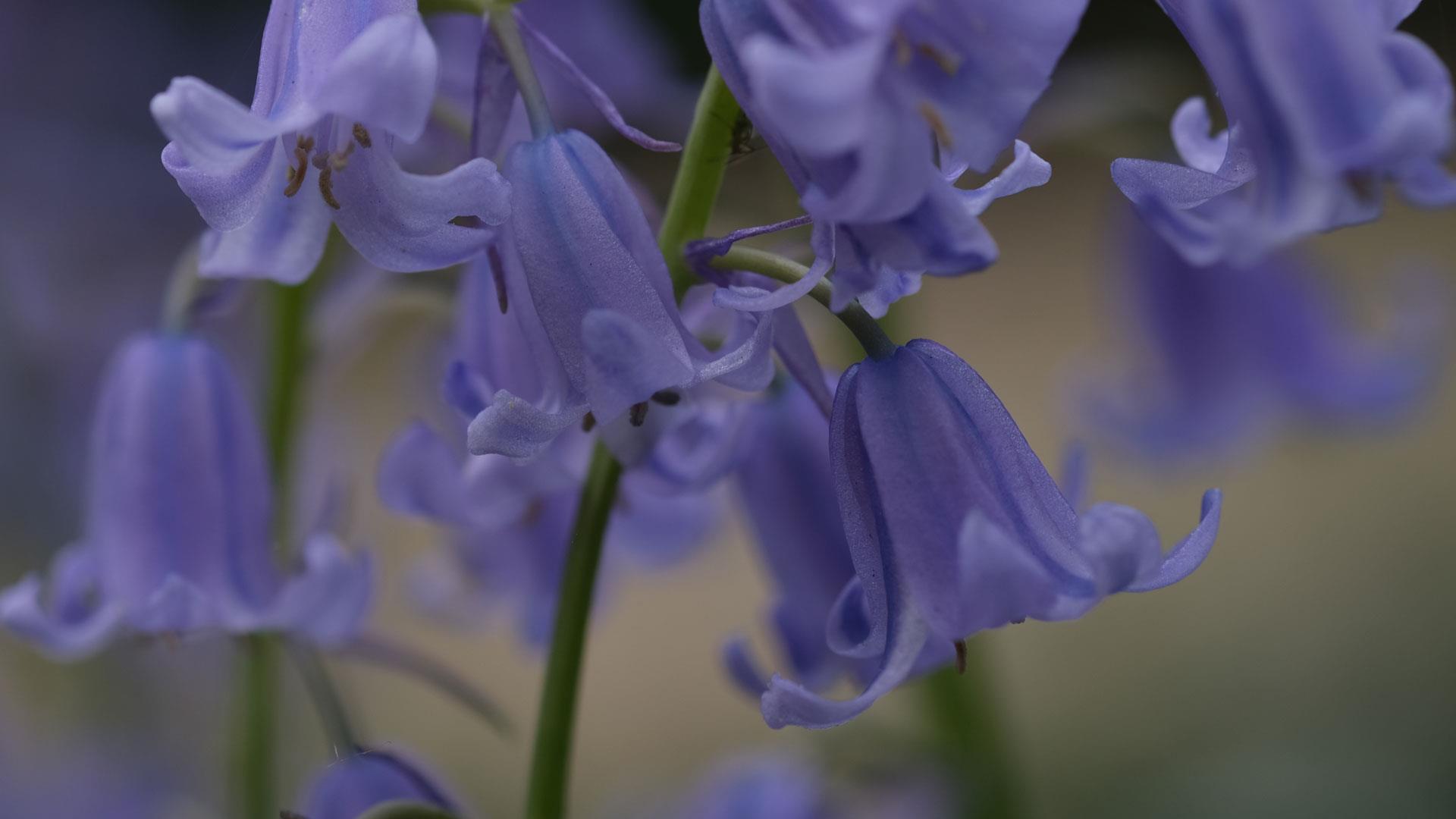
Allen Banks and Staward Gorge, Northumberland
Enjoy a picturesque walk at the National Trust owned Allen Banks and Staward Gorge. Whether you fancy a riverside walk or a woodland one, there is something for everyone. If you head on the woodland trail in springtime, you will encounter a blue carpet of stunning bluebells.
Nearest campsite: Haltwhistle Club Site
Great High Wood, Durham
Great High Wood is mysterious, with a semi-ancient oak and beech woodland. In the springtime, the woods are decorated by a sea of beautiful bluebells.
Nearest campsite: Barnard Castle Club Site
Best bluebell woods in Scotland

Crinan Wood, Argyll and Bute
Often described as Scotland’s very own remnants of a rainforest, Crinan Wood is fascinating with plenty of history. The wood is home to scenic views and intriguing wildlife, as well as a gorgeous bloom of bluebells in spring.
Nearest campsite: Oban Club Site
Gight Wood, Aberdeenshire
Gight Wood is one of the last remnants of ancient woodland in Aberdeenshire. The enchanting wood is home to the very rare red squirrel. At the beginning of summer, you will be able to spot bluebells flowering in the wood.
Nearest campsite: Tarland by Deeside Club Site
Kinclaven Bluebell Woods, Perthshire
Visit Kinclaven Bluebell Woods in late spring/early May to see a vast array of bluebells in a magical oak wood.
Nearest campsite: Scone Cub Site
Glen Finglas, Loch Lomond and the Trossachs
Glen Finglas lies at the heart of the incredible Loch Lomond and The Trossachs National Park. Due to being rich in heritage and wildlife, this woodland restoration project brings in plenty of visitors every year. The woodland is home to varying plants, trees and bluebells!
Nearest campsite: Loch Ness Shores Club Site
Best bluebell woods in Wales
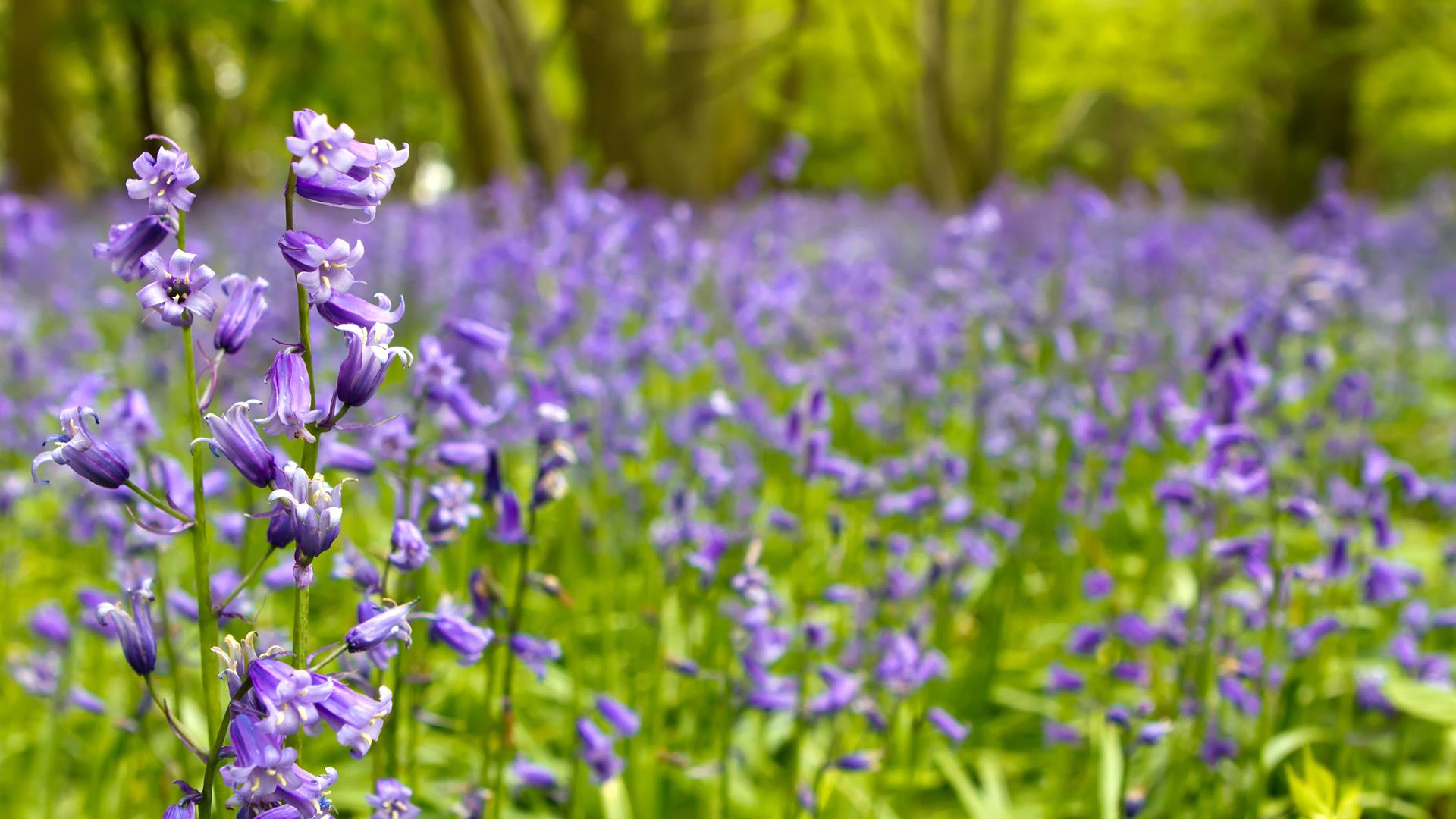
Pengelli Forest, Pembrokeshire
The impressive Pengelli Forest is one of the largest remaining oak woodlands in Wales. Take a peaceful stroll through the forest and enjoy the bluebell boom in late spring/early summer. There is also a shimmering stream once you get to the bottom of the valley.
Nearest campsite: Cardigan Bay Club Site
Dinas Powys Woods, Powys
Named one of the best in Wales for bluebells, Dinas Powys Woods exhibits a sea of shimmering lilac and vibrant blue bluebells in the spring.
View our campsites in PowysWhat’s your favourite place to see bluebells? Share your bluebell woods adventure with us by tagging us in your Instagram or Facebook posts.
